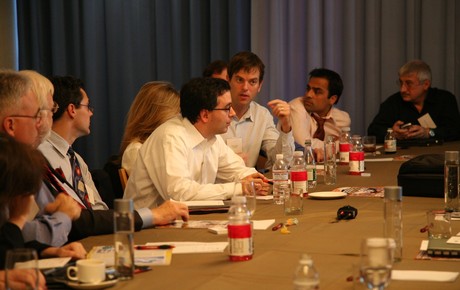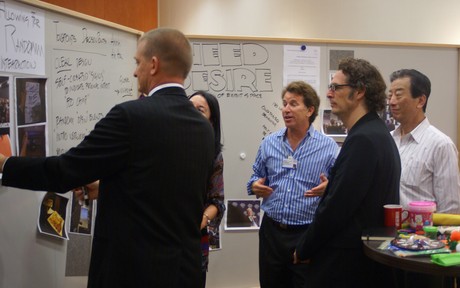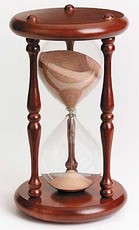8 DOs and DON'Ts for Customer Advisory Boards
6 Things Customer Advisory Board Members Love to do:
- Network with their peers. What makes a Customer Advisory Group great is the value of the relationships that customers build with one another. You know you're on the right track if members call one another for advice in between meetings.

- Share their mental models and their plans with their peers. Don't use your CAB meetings as a venue to share your product road map with customers. Instead, ask customers to share their strategies and plans with one another for peer review. If your CAB members know they can count on your semi-annual CAB meetings as a valuable opportunity to lift themselves out of day-to-day operations and to think strategically about their own business by learning about their peers’ strategies and challenges, they'll become willing to share their non-competitive plans with their peers for feedback. Your team will learn a lot more about what your customers value and need by listening to your customers' present their strategies to one another.

- Provide input about their real needs and see quick, iterative results. If you have the right customers engaged in strategic discussions with your team, and you listen deeply while they talk among themselves about what they need to do and what steps they currently have to do to get things done, and where their frustrations occur, you’ll quickly discover the unmet needs that are truly valuable to them. If you then take these top customer priorities and use them to fuel your lean start up initiatives, your customer advisers will become consultants and advocates, ensuring that your implementation team is taking into account the real-world context in which they live and breathe. Stop thinking about Customer Advisory Boards as a relationship-building activity, and think about them as incubators for innovation.

- Identify operational metrics you should be tracking. Customers know you're taking them seriously if you start measuring what matters most to them. After customers have identified and discussed a thorny issue, ask them what activities or processes you should be monitoring that would demonstrate you've solved that problem for them. Here's a tip: Have Operations (not Marketing) run your Customer Advisory Boards. Why? Because things that directly impact customers, and therefore revenues, will get monitored and addressed. Hint: Elapsed time is often a critical customer-impacting metric.
- Build close relationships with your top business and technical execs. There's nothing more valuable to a customer than a fast path and a trusted relationship with a high-level operations or technical exec who can solve a thorny problem for them. By the time an issue with your firm or your products falls into the lap of one of your CAB members, they want to be able to pick up the phone and get quick action. Having a trusted relationship with the powers that be in your firm (not just their account exec), is worth attending a few meetings.
- Have you acquire and embrace a product they're already trying to integrate with your products. CAB members are your best source of product and company acquisition and partnership candidates. They'll tell you what products and services and companies they trust and use to get things done. These should be on your shortlist for partnerships or acquisition.
2 Things Customer Advisory Board Members Hate:

- Demo's of products about to be launched that they weren't consulted about.We've seen a number of CABs bite the dust when proud product managers came to CAB meetings to provide a preview of a new product or service that essentially blind-sided the CAB members. "Why didn't you involve us?," they ask? "Your pricing/features/positioning don't meet our needs." Usually, it's too late in the product launch process to make the kinds of changes that CAB members point out as needed.
- Being asked for advice and then ignored. Equally bad is when a product design team brings a concept to the CAB, listens to their input, and then completely ignores it!
Background Reading:
If you're involved in customer advocacy, have one or more Customer Advisory Boards, or are considering launching one, here are some of our best insights to keep you on the right track to run CABs your customers and your execs will value:
- Identifying the RIGHT Customers for CABs
You Want Customers with Insights and Passion for the “Jobs” They Do (Not for Your Brand)
- Creating Customer Advisory Boards Your Customers will Love
How to Design a Successful "Outside In" CAB Program for your Customers and Top Executives
- There's Gold in those Customer Metrics!
Mine them Well and Reap the Rewards in Customer Loyalty & Increased Business
- What Stands in the Way of Successful Customer-Centric Projects?
The Five Gotchas that Plague Most Initiatives
0 comments
Be the first one to comment.
You must be a member to comment. Sign in or create a free account.


